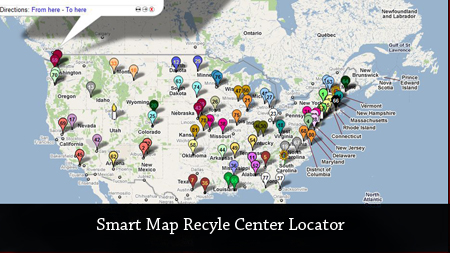
Every house painting project should have some left over paint or stain. It is a good idea to have one or two gallons of touch up paints available in case the substrates are damaged or high traffic need "freshening" before the next major paint job. However larger quantities should be re-used on other projects, donated to charity, or recycled. Facts about the amount of left over paint in the US: The U.S. Environmental Protection Agency calculates that annually nearly 70 million gallons of paint are left over in the United States. Imagine 27.6 billion square feet each and every year ( 303 square miles). Check the label. Paint manufactured before 1978 could contain lead, many paints made before 1991 could contain mercury. Both materials should be listed on the paint label. Paints containing lead or mercury should be taken to a household-hazardous-waste collection facility. Recycle it. Some city/municipalities offer recycling programs for old paint and empty paint cans. Water-based, or latex, paint can be recycled into new paint or it can even be used to create nonpaint products such as cement. Oil-based, or alkyd, paint is usually used for fuel blending—meaning it's burned to create energy at a power plant. To find out whether paint recycling is an option in your area, contact your municipal recycling or household-hazardous-waste center. Dispose of Latex Paint once latex paint is dried it can be safely disposed of in the garbage, or local a waste facility. Paint cans can also be dried out and disposed. Water-based paint is treated as hazardous in only a few states—including California, Washington and Minnesota—and is still generally accepted at hazardous-waste facilities Oil-based paint is always considered hazardous and should be disposed of at a household-hazardous-waste collection facility.
Shearer Painting will take away and recycle or dispose of your unused paint properly.
When it comes to recycling your old paint, there are a few tips that can make the process safer and easier:
If disposed of improperly, paint can be a hazard by plugging or damaging septic fields. It can also overwhelm sewage treatment plants and turn dumpsites on the ground into hazardous areas. Fortunately, latex paint is a material that can be disposed of without having to take to a hazardous waste facility. Latex or water based paints can be dried out and made safe for disposal merely by exposing it to the air.
It is crucial however when preparing to dispose of paints that it is latex based. Oil based paint does not dry out when exposed to air and can be a real hazard due to the fumes that emanate from the paint, which are not only toxic but flammable. So what do you want to look for when preparing to dispose of paint? It's as easy as looking at the label or lifting the lid. Latex paints will often have the words "latex," "acrylic," or "water-based" on the label, while oil based paint will have the words "alkyd," or "oil-based" associated with them. Also present on the label, Latex paints will have clean-up instructions telling you to "clean with water." If the label states to "clean with solvents" Or that's that the product is "flammable" or "combustible," then you're dealing with alkyd paint. Sometimes the container itself can tell you what kind of paint you have without even looking at the label. If your paint can is plastic, you most definitely have a latex paint. Oil-based paints always come in metal cans. Dry time is also a discerning factor, as latex paint typically dries in about an hour when applied to a surface.
Oil-based paints will often have to dry overnight. So what do you do if the left over paint you have is indeed oil-based? Well, though you can't dispose of it yourself, you can take it too a household hazardous waste facility. These facilities will dispose of your unwanted paint properly and safely. This may also be an option if you have large quantities of latex paint. Household hazardous waste facilities can be found in every state across the country. Most of these facilities will charge a fee for the disposal of paint. For example, the average fee in King County, Washington, is roughly $7 per gallon.
What can be done to prevent having a large quantity of paint left over? When painting, it is important to know roughly how much product is required for the specific surface size you are painting. Painting companies such as Shearer Painting, have trained professionals that will calculate the amount of paint necessary to properly coat a surface without leaving a large amount of excess paint. If you're doing a job yourself, the same information can be provided to you by the paint manufacturer or often times the sales associates at most paint stores. We here at Shearer Painting feel it necessary to keep our customers well informed about the products we use and how to properly handle them. Disposal of paint is just another part of our jobs. You can have peace of mind in knowing that your excess paint will be removed and properly dealt with.
Do It Yourself Instructions for Recycling Paint:
1. Lay out plastic film in a well ventilated area. We suggest 4 mil polyfilm spread out in A CONTAINMENT enclosure; such as bracked 4 x 4 posts nailed together. This is the same system we use in our video.
2. Pour out left over paint over the plastic. Take care to keep the no thicker than 1/8 of an inch. Spread out the paint with a stir stick or make shift spreader made of cardboard.
3. Allow paint to dry; this should be 12-48 hours depending on temperature and humidity.
4. Thoroughly dried out latex paint and be disposed of with normal garbage.
Find a Paint Recycle Center in your city